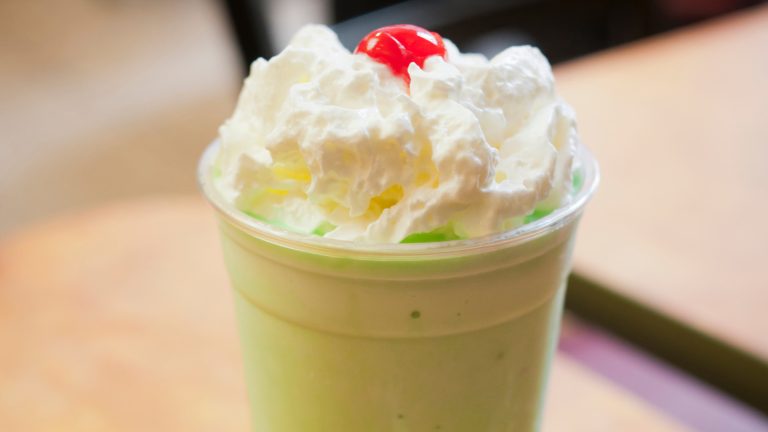Peroni is not only Italy’s biggest-selling beer brand, but it also epitomizes much of what people love about the country. With plenty of style and sophistication, its popularity comes as no surprise. Known for its crisp and refreshing taste, Peroni has become a favorite in many bars, restaurants, and homes. It’s the type of beer that works perfectly on a sunny terrace in Rome, with a pizza in California, or anywhere in between. But what makes this beer so popular, and does it deserve its international reputation?
As well as pondering those key questions, I’ll also take a deep dive into Peroni and give you plenty of interesting bits of info along the way. As a beer lover who has enjoyed many trips to Italy over the years, I feel well placed to guide you through this beer giant. Not only that, but we have also had the pleasure of speaking to Peroni for this article. The company has not only provided us with some great insights but also some fascinating historical pictures. Without further delay, here’s everything you need to know about Italy’s most iconic brew.
History of Peroni
Peroni is a historic beer brand that found its place producing high-quality lager in a country that was more focused on wine than beer. The story started in 1846, when Francesco Peroni founded the original brewery. This was in the small town of Vigevano, which is not too far from Milan. However, in 1864, Peroni opened a second brewery in Rome and started to position itself at the center of Italian culture.
Over the years, Peroni moved with the times and always looked to modernize if it could. Its expansion was paused by World War II, but it soon recovered afterward, being in prime position for the economic boom in the ’50s. In 1963, Peroni launched its most iconic beer: Nastro Azzurro was designed with a stronger flavor profile, hoping to appeal to those looking for a more premium product.
Throughout the following decades, Peroni would continue to expand — buying new factories and modernizing its existing line-up. It led to the point today where the company has three factories that are spread across the country in Rome, Bari, and Padua. So, Peroni still keeps these strong Italian roots, despite being under international ownership since 2003. These days, the brand is still thriving, with its customers enjoying a small percentage of the 600 million liters of beer it produces each year.
What does Peroni Nastro Azzuro taste like?
When socializing, I tend to hear a lot of detractors of Peroni’s taste. The argument isn’t that it tastes bad, more that it doesn’t taste of much at all. Not only do I feel that’s unfair, but I feel it doesn’t address why many people drink lager. With myself, the beer I drink can depend on my mood. On a cold winter’s day, I may love a heavy stout or a craft beer with complex flavors. On a nice sunny day, I want the most crisp and refreshing lager I can find. Peroni is a drink that excels in the latter category.
Plenty of beers attempt to be clean and refreshing, but few do it as well as Peroni. It’s a light-bodied beer that is beautifully balanced. The gentle malt isn’t too sweet, and the hops aren’t too bitter. With some citrus zest and crackers on the nose, it’s a brilliant beer. It’s ideal for hot days and with food, but it’s also quite simply perfect for anyone who just prefers crisp beers.
If you want something with more depth, there are plenty of alternatives out there. It’s for this reason that I disagree with Peroni’s detractors. However, it’s worth knowing what type of beer you’re buying to avoid disappointment.
What does ‘Nastro Azzurro’ mean?
We’ve talked about the beer, but what does Nastro Azzurro actually mean? It’s not just a combination of words that roll eloquently off the tongue. There is an interesting history behind the name, as the folks at Peroni proudly tell us. The term can be translated to Blue Ribbon in English and has a connection to a historic Italian ship. The Blue Riband is an unofficial accolade given to the fastest transatlantic ocean liner, and in 1933, the SS Rex won this award with a speed just shy of 29 knots. Until then, the only liners to win this prize were either American, British, or German.
The sense of pride in the legendary ship not only inspired Peroni to name its new creation after the award, but also inspired the design of the bottle. Peroni explains, “Each Peroni Nastro Azzurro bottle features an homage to this, with a blue ribbon around the neck of the bottle.” The ship itself unfortunately suffered a sad end as it became a casualty of World War II. However, its legacy lives on as a symbol of supreme Italian craftsmanship, much like Peroni itself.
How Is Peroni made?
The basic production process of beer may follow a similar pattern, but each brewery will have its own nuances. For Peroni, that process starts with steeping the barley. This is where the grain is soaked until germination is triggered. At this stage, the barley used is both cleaned and graded for the highest level of quality. The quality of barley is paramount to the result, with Peroni proudly saying, “Malted Moravian barley help to deliver a clean, rich malty flavor.” The company adds, “We also use an abundance of noble hops, including noble Saaz hops. This helps to complement the barley, deliver the subtle aromatics and flavor, and contribute to the bitterness that delivers a perfectly balanced flavor.”
After the germination starts, it needs to be stopped at the right moment to make the ingredients more stable. This is done by increasing temperature, but Peroni likes to spend its time with this step. Drying the grain out slowly with gradual increases in temperature preserves the enzymes and the grain’s delicate characteristics.
Once the barley’s rootlets are removed, the grain is then ready for mashing in water. The sugary liquid, called wort, is then separated from the grain husks and boiled to sterilize it. Hops are then added to achieve the beer’s balanced bitterness, with yeast added later to turn the wort into beer. After being filtered and inspected, the beer is finally ready for packaging.
How to drink Peroni
The quick answer to this question is, of course, any way that you want. However, being a light and refreshing lager, there are times when Peroni shines particularly bright. Firstly, you want it to be near ice cold and served in a slender glass. The Peroni pint glass is mostly in the pilsner style, but with a little more flair. The long neck allows a long retention of the foam head and concentrates its subtle aromas up to your nose. Aside from logical reasons, the Peroni glass is also one of the more beautiful glasses around, helping to show off the beer’s clarity and carbonation.
Peroni is exceptionally refreshing and clean, meaning you don’t feel full after a glass, and there is no lingering aftertaste. It’s these qualities that make it pair well with pretty much any food. This is especially true for food where you want a nice, clean palate with every bite. Peroni will wash away your previous mouthful, cool you down, and allow you to enjoy the richness of whatever food you’re tasting.
The company tells us as much itself, saying, “Peroni pairs beautifully with an array of foods, but it especially shines with lighter Italian dishes.” As a particularly good accompaniment to spicy food, I think Peroni is also great with the likes of Mexican and Indian cuisine.
Is Peroni worth it?
When you order a Peroni at the bar or grab yourself a bottle, you’ll often find that it’s more expensive than many of its rivals. Whether or not the higher cost is worth it always comes down to personal preference. For casual drinkers, the finer points of lager may be missed on them, so paying that little bit extra may seem pointless. For beer lovers, however, you can taste the difference between Peroni compared to the budget brands. Personally, I’m always happy to pay that little bit extra to get something nicer.
That being said, I often switch it up, and Peroni won’t always be my beer of choice. This is just preference and mood, as there are plenty of other great beers out there to enjoy at a similar or slightly cheaper price point. Thankfully, with beer, the initial outlay for one drink won’t ever hurt your wallet too much; therefore, it’s always worth giving any lager a try. So, is Peroni worth it? I’d say so. Looking past any of the allure of imported larger or sophisticated branding, it’s simply an elegant beer that could well turn out to be your new favorite.
Peroni Nastro Azzurro vs Birra Moretti L’Autentica
When it comes to Italian beer, Peroni Nastro Azzurro is still the star of the show. However, Birra Moretti is hot on its heels. Both are great Italian beers with all the qualities we’ve looked at already. Moretti’s flagship lager, L’Autentica, does have more flavor. The body of the beer is slightly fuller, and the malt is noticeably more pronounced. I wouldn’t describe Moretti as a robust beer, as it’s still light, but it has more depth than Peroni. While that may seem like it’s a better drink, beer is more nuanced than that. When it comes to refreshing beer, I don’t think there is anything better than Peroni.
If you’ve been working hard on a hot day, Peroni is an unbeatable thirst quencher. Beer snobs may turn their noses up at such a statement, but I think there’s an underrated value in how clean and crisp a lager is. It’s the same reason Mexican beers can be so appealing. Here, it’s a fight between a light and delicate beer on one hand, and a fuller, more malty beer on the other. Personally, my favorite of these two depends on my mood. They may be different, but they are equally superb.
Peroni Nastro Azzurro vs Peroni Gran Riserva Doppio Malto
Are you a fan of Nastro Azzurro but are craving something a little fuller? If so, Peroni can satisfy your cravings with another one of its other offerings. The Gran Riserva Doppio Malto offers a more robust drinking experience. As you can probably guess from the name, it’s much more malt-forward than Nastro Azzurro. This presents with a beautiful, toasted sweetness that can be found throughout the palate. There is a more pronounced bitterness here with more depth than Nastro Azzurro. It is also much stronger, with the Doppio Malto having a 6.6% ABV compared to the Nastro Azzurro’s 5.1%.
It caters to those who are seeking a more refined and bold lager experience. Doppio Malto is harder to find and more expensive, but it can be worth it when you want something extra special. As I said when talking about the Moretti above, which one you’d prefer would just come down to personal preference. Doppio Malto may have the same level of quality as Nastro Azzurro, but it offers a completely different tasting experience.
This Italian brewing company has a great gluten-free beer
For those who have to follow a gluten-free diet, finding a suitable beer can be tough. Peroni, however, has produced perhaps the best gluten-free beer on the market. To make this happen, a unique enzyme is introduced at the end of the fermentation to remove gluten. This means the product is made in the exact same way as the regular Nastro Azzurro until right at the end. This keeps the quality high and ensures it tastes as close to the original as possible. The result is a beer that has been given a seal of approval by the Italian Coeliac Association.
In terms of a taste comparison, it’s difficult to tell them apart. The only possible variances are that the gluten-free beer’s bitterness is a little more muted, and the taste isn’t quite as clean. However, those changes really are minimal, and Peroni has done an impressive job of replicating the original Nastro Azzurro’s famous taste. For those with celiac disease or gluten sensitivity, it means they don’t have to go without. They can enjoy a nice, refreshing beer without worrying about the side effects.
Peroni also has one of the best non-alcoholic beers
When they first became widely available, I wasn’t a big fan of non-alcoholic beers. Often, they were way too gassy and had an unpleasant aftertaste. Many of the worst offerings still have these issues, but not Peroni. Nastro Azzurro 0.0% quite closely matches its alcoholic brother for those times when you want to keep a clear head. Where it really hits the mark is with its refreshing character, which is what many people seek when craving a beer. It has a clean taste which is beyond many of its rivals.
Of course, it isn’t perfect, as you don’t get that alcohol kick, and there is still a tiny bit of an aftertaste. However, it has a fullness missing with many other non-alcoholic beers, and you can tell it’s Nastro Azzurro immediately. People drink non-alcoholic beers for different reasons, but if you’re trying to satisfy a craving, the 0.0% does a great job of doing that. As with the regular iteration, there isn’t a huge amount of unique flavor here, but that’s not why most people turn to these drinks. Guinness 0 is often lauded due to how closely it replicates the original, but that’s no good if you don’t like stout. This Peroni offering is the top choice for lager drinkers.
The partnership of two Italian icons
As you may have guessed from the above image, Peroni has teamed up with another Italian icon in the form of Ferrari. Fans of Formula 1 would have already seen Peroni’s branding on the famous red car in what is now the second year of a multi-year partnership, as of this writing. Peroni tells us that the collaboration “celebrates the continued relationship between two iconic Italian brands, synonymous with Italian passion and style.” It’s hard to disagree with that.
Advertising an alcoholic beer on a vehicle wouldn’t have felt right. However, promoting the Nastro Azzurro 0.0% feels like a perfect fit, especially since being the designated driver is a great example of when a non-alcoholic beer can be enjoyed. But sadly, for most of us anyway, we won’t be driving home in a Ferrari. Both of Ferrari’s world-class drivers have played a role in advertising the partnership, which emphasizes the “passion and style” Peroni mentions.
How Peroni defines Italian beer culture
I’m a big fan of Italian beer, with many of them having similar characteristics. Peroni is the embodiment of them with all the traits I’ve mentioned. These beers are usually light, crisp, and balanced. This makes them exceptionally easy to drink and suitable for any occasion. The worst light beers in the world can be like drinking flavored water. However, Peroni, along with many of its Italian rivals, has a lot more substance behind it. You can still taste the bitterness and sweetness, but they sit elegantly in the background.
This no doubt partly comes from high-quality ingredients and excellent craftsmanship. Sophistication and a laid-back lifestyle are a couple of the positive stereotypes surrounding Italian culture, and the country’s beer culture can arguably be closely linked to this, as their products are often seen as premium beers for relaxed social occasions. Other Italian beers may be making a name for themselves, but Peroni still sits front and center of this beer culture. All of this helps to make Peroni classically Italian. More than just a beer, it’s a symbol of the Italian culture and lifestyle.
Peroni is owned by Japanese brewing giant Asahi
With many alcoholic drinks, their ownership and manufacturer can be somewhat of a mystery. As for Peroni, it hasn’t been in Italian hands for a long time and was bought by Asahi in 2016. Many will recognize that name as one of the biggest brands in Japanese brewing. There is also a North American twist here, as its distribution in the continent is handled by Molson Coors.
That begs the question of whether you can still count Peroni as truly Italian? That depends on your view, but the beer’s recipe has remained unchanged — and, as previously mentioned, it still has three factories in Italy, along with its rich history. When we asked the folks at Peroni about this, the answer was that “this legacy is the foundation of how Peroni is crafted, brewed, and celebrated among drinkers today.” Still, some may argue that Peroni has lost some of its authenticity, especially considering its use of other breweries. For example, the Peroni Nastro Azzurro that’s consumed in the United States is made in a Molson Coors brewery in Georgia to cut down on costs.
Some beer brands may pretend to come from a particular country or claim to be that country’s “style” of beer. For its part, Peroni was founded in Italy, and despite its international influence, it’s still the symbol of Italian beer culture and the epitome of the lagers you can drink from the beautiful country. So, in my eyes, Peroni is still quintessentially Italian.





